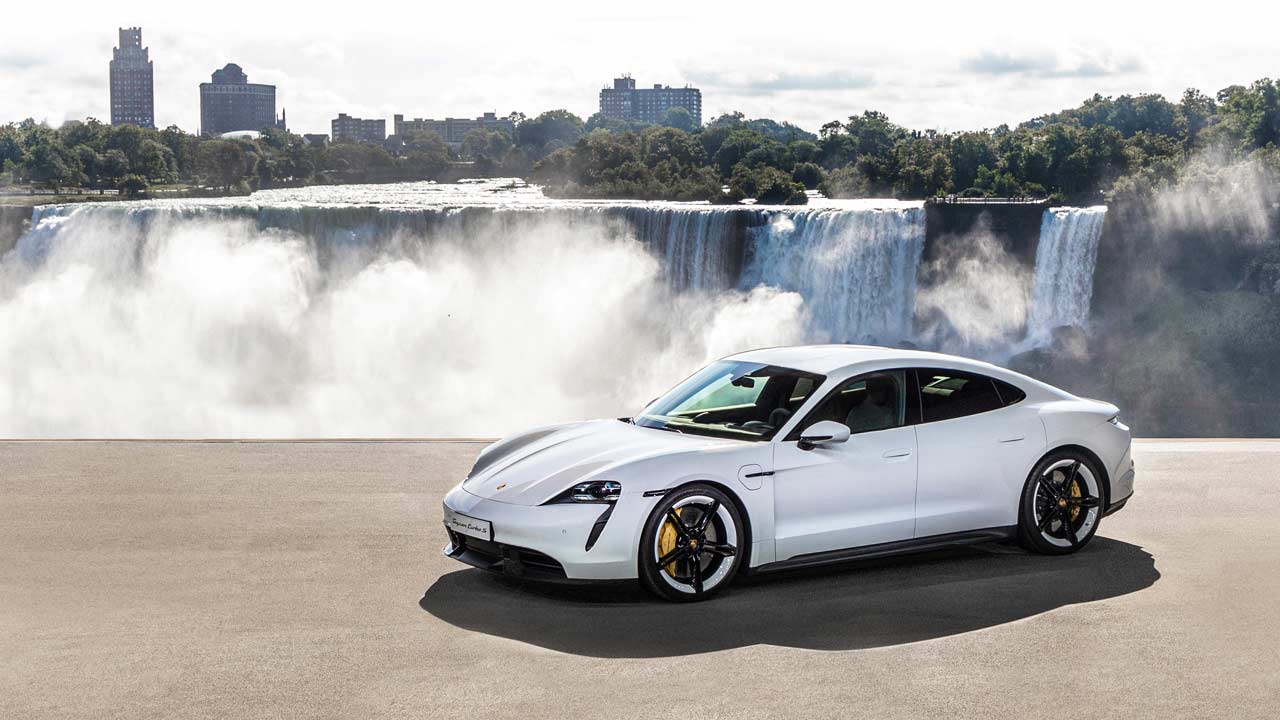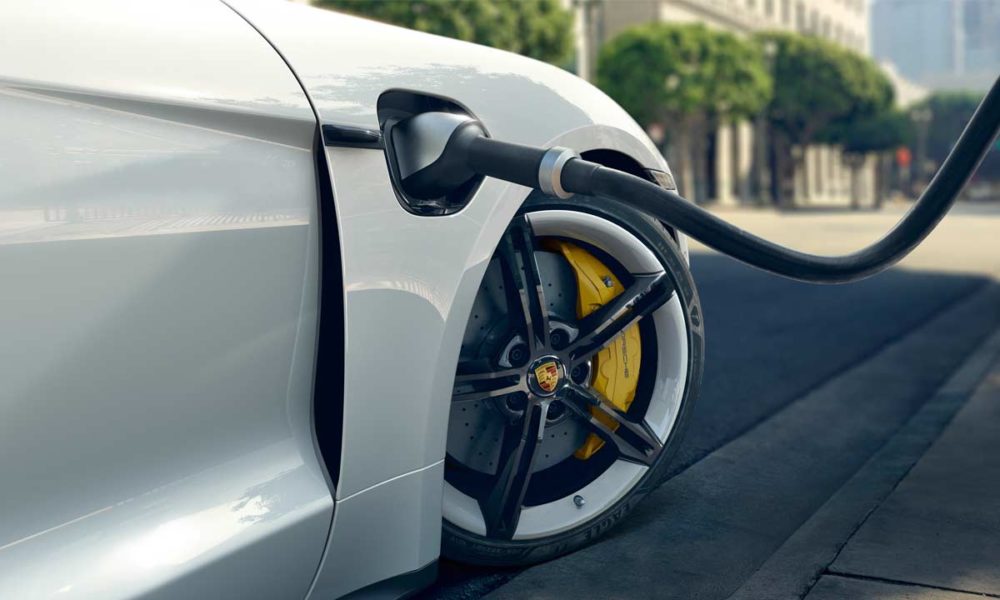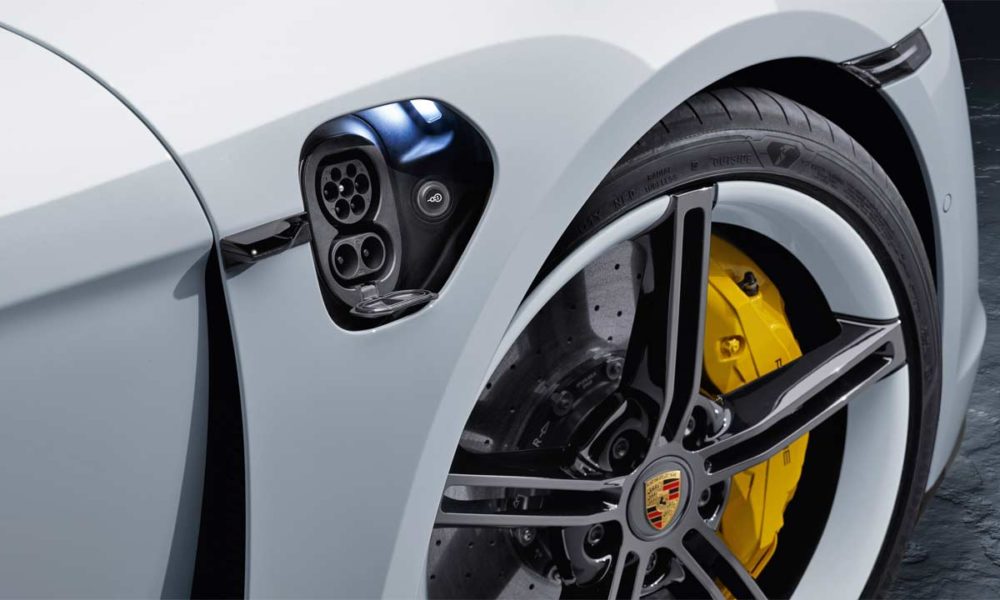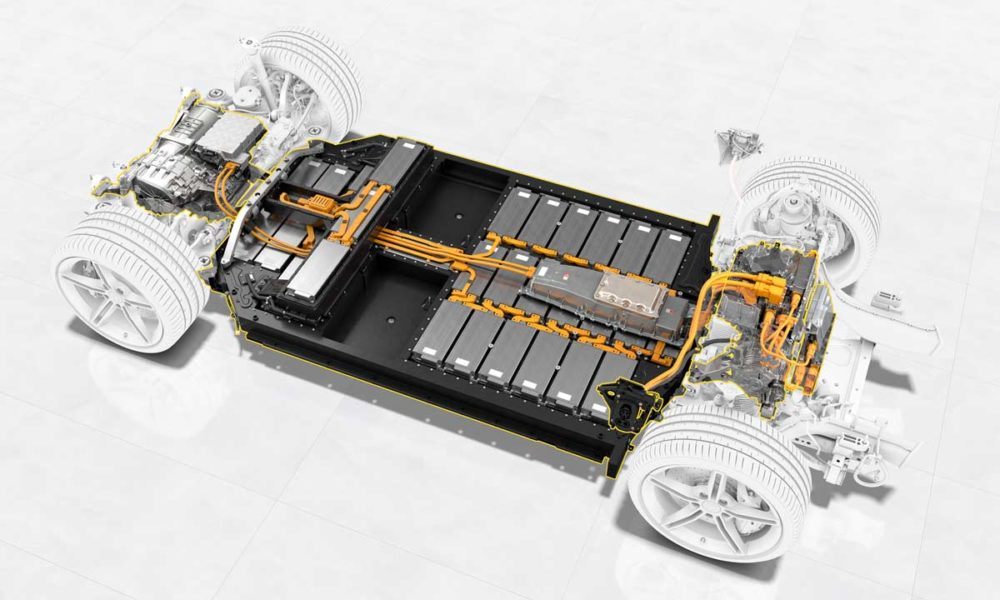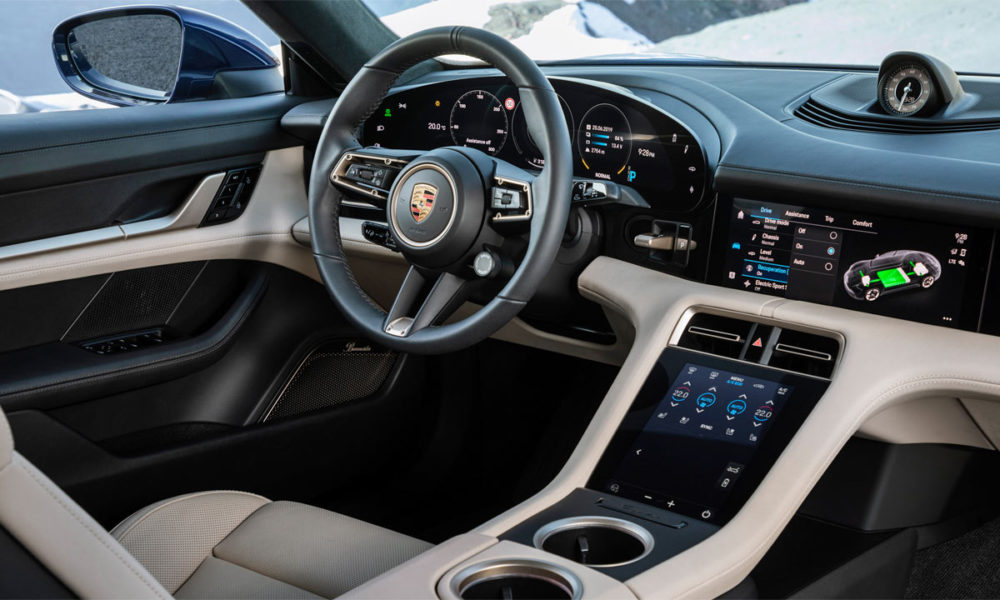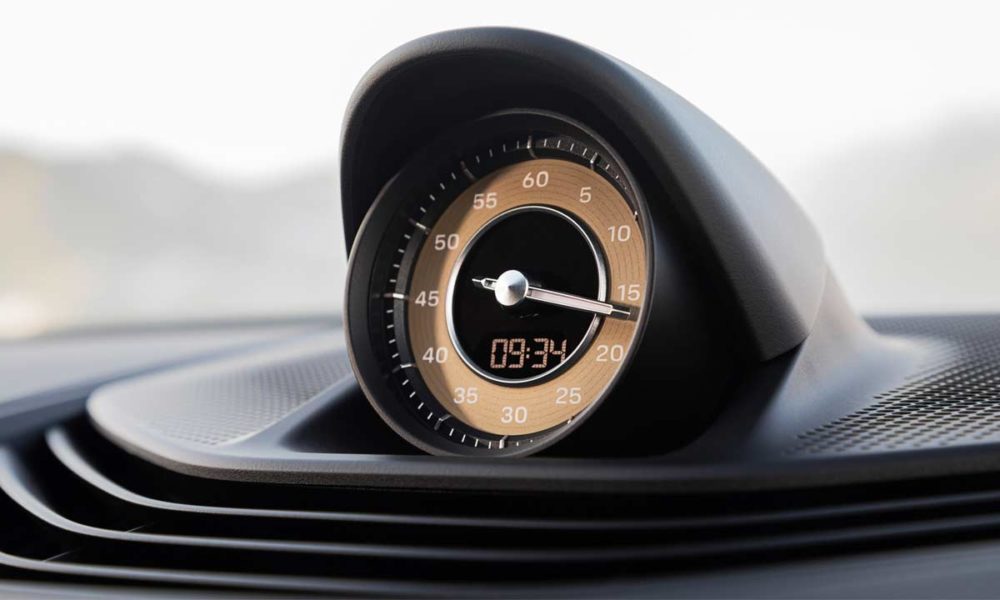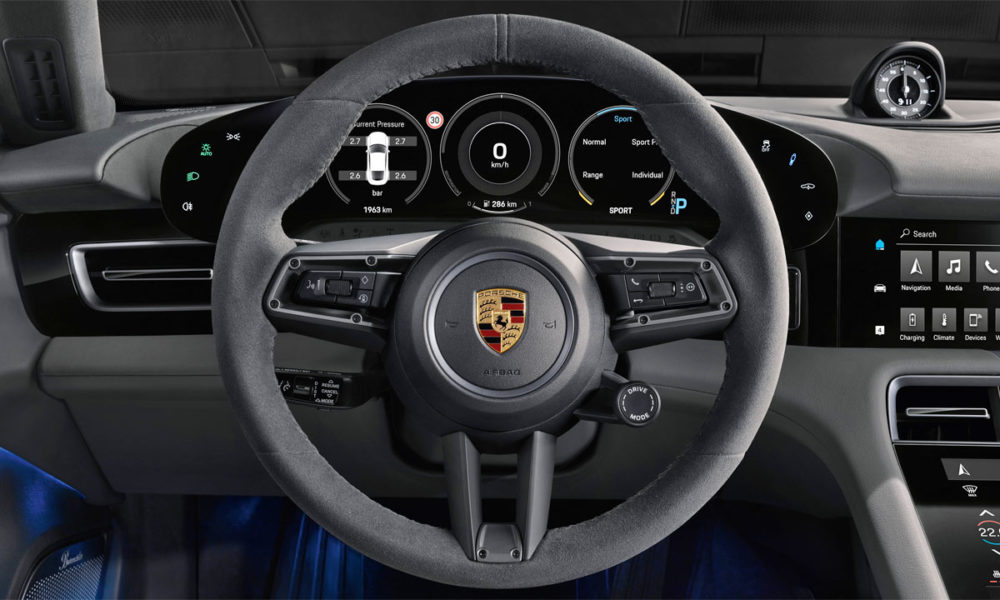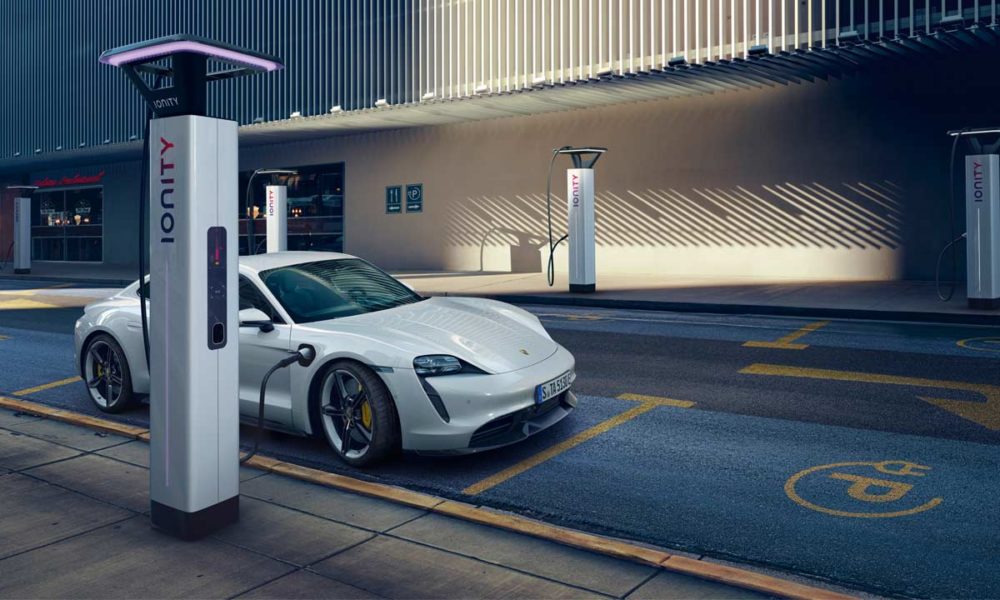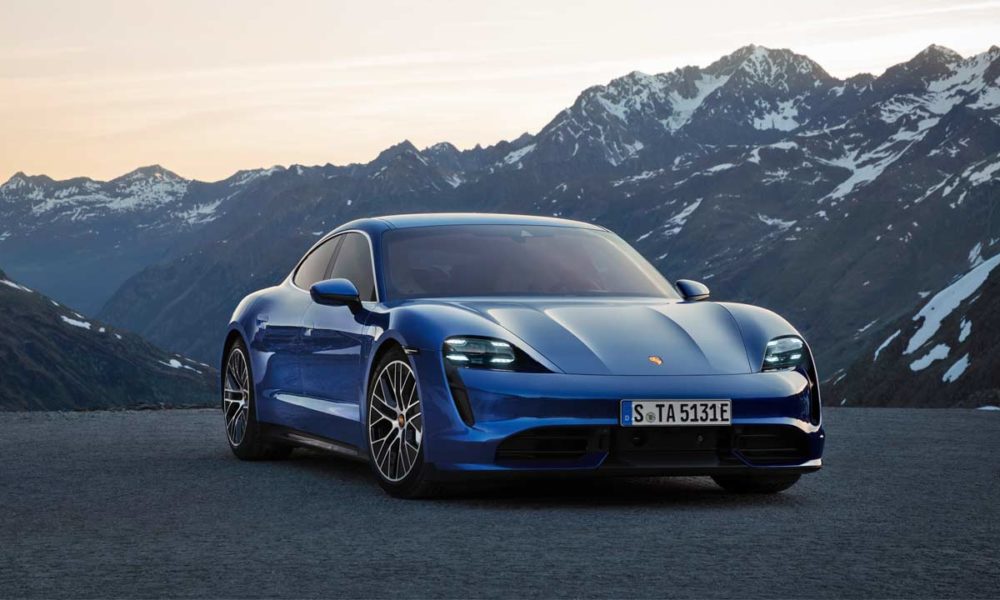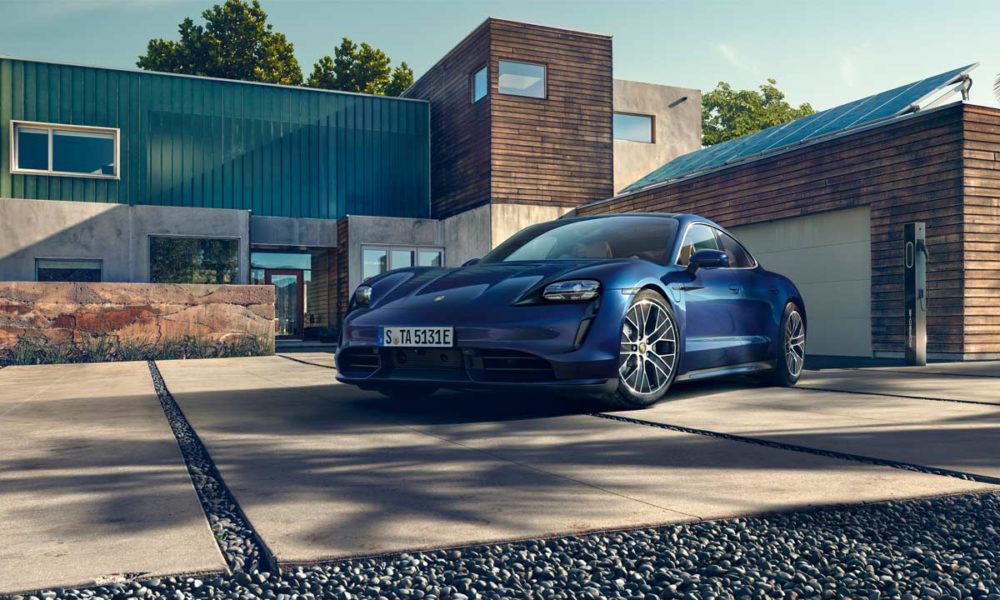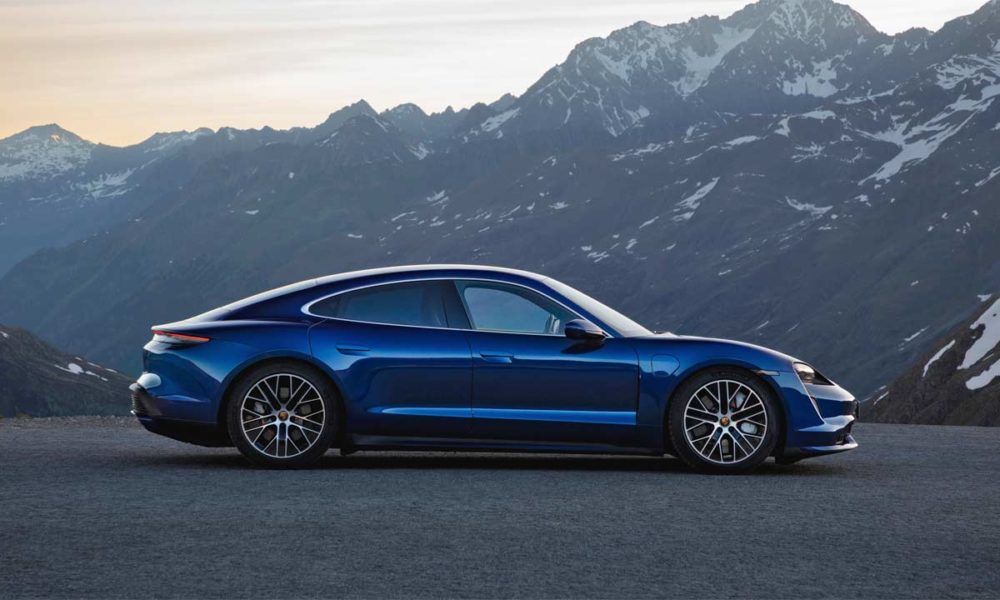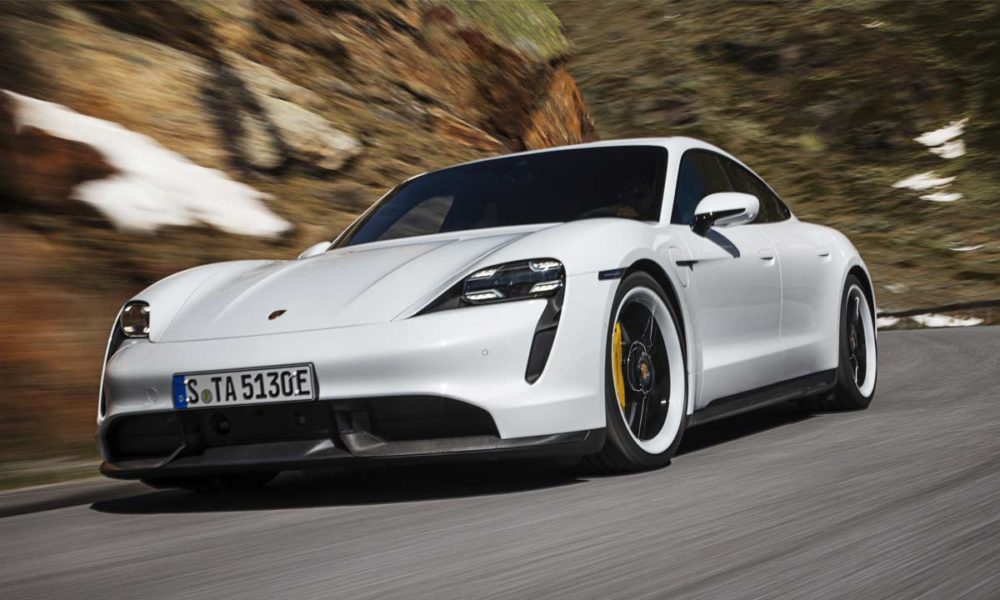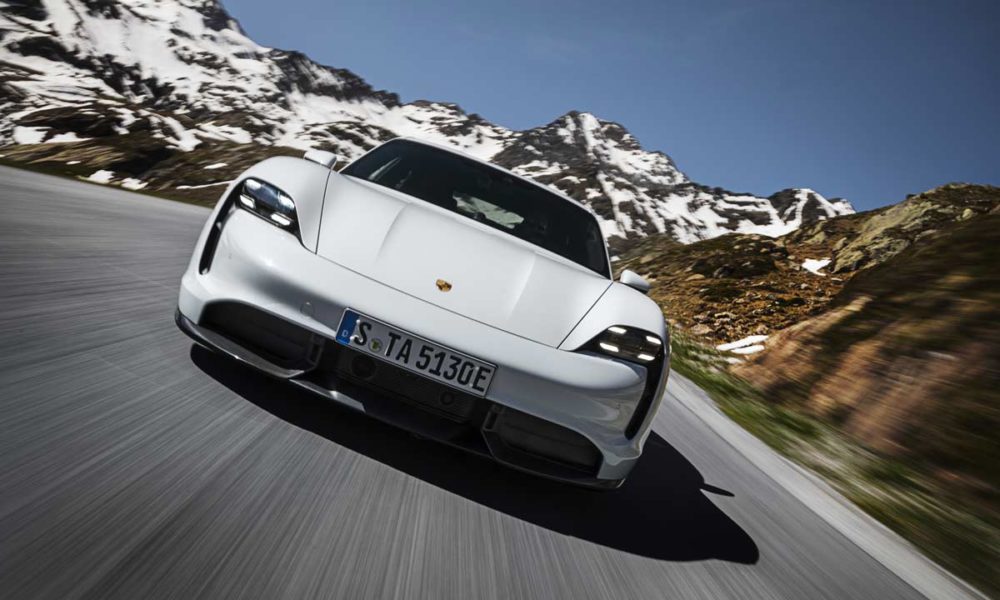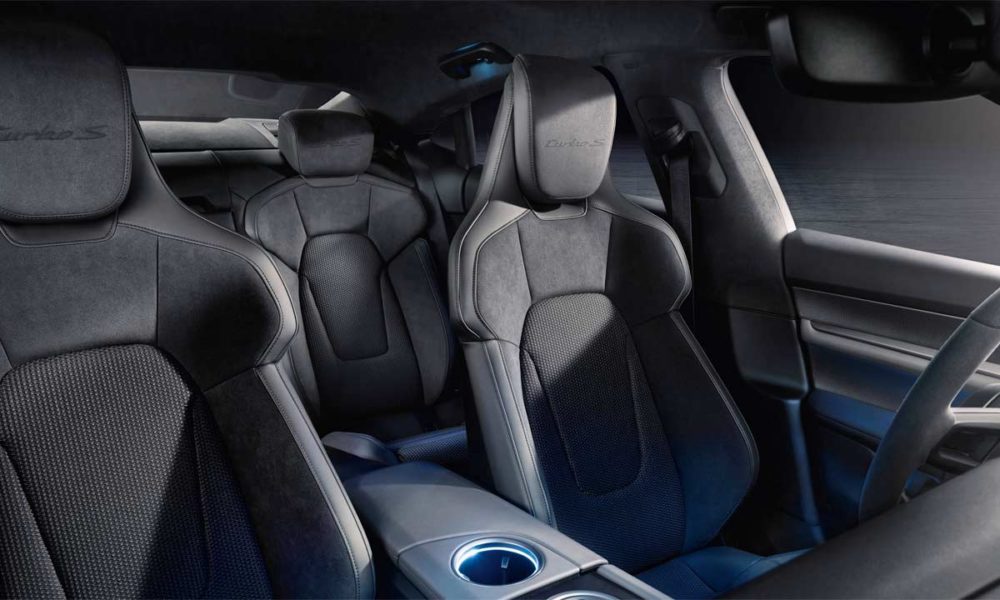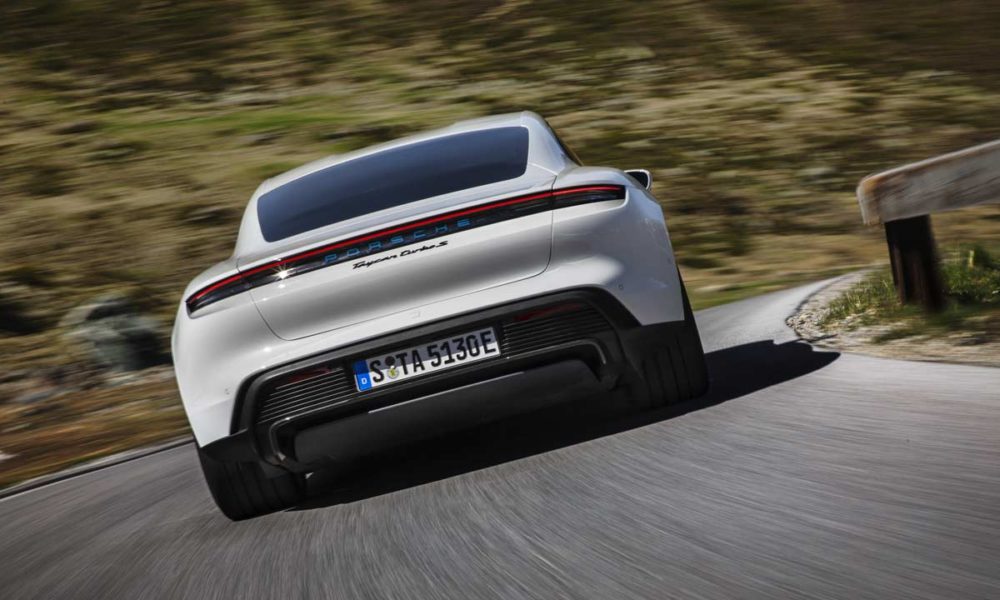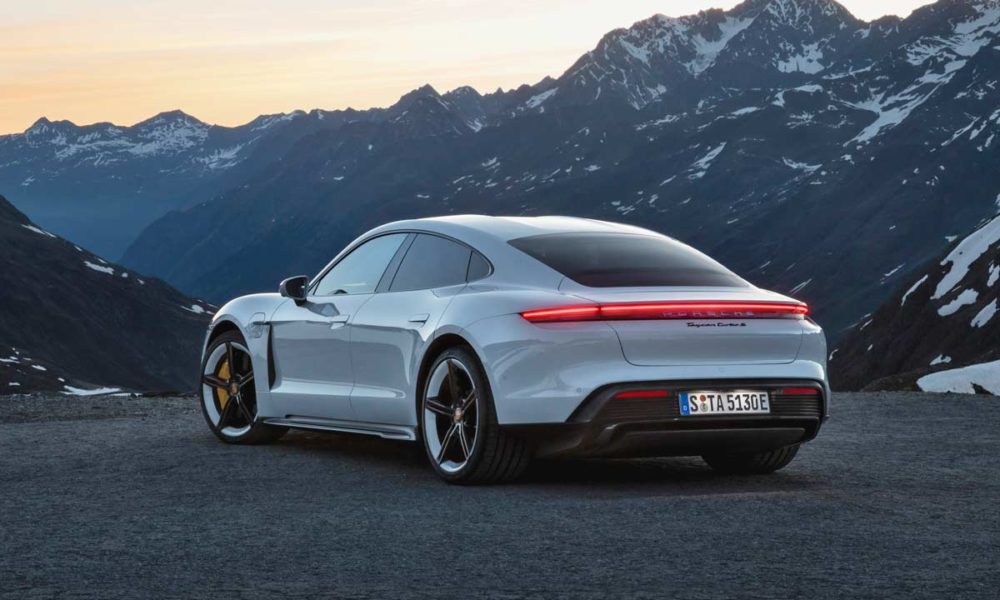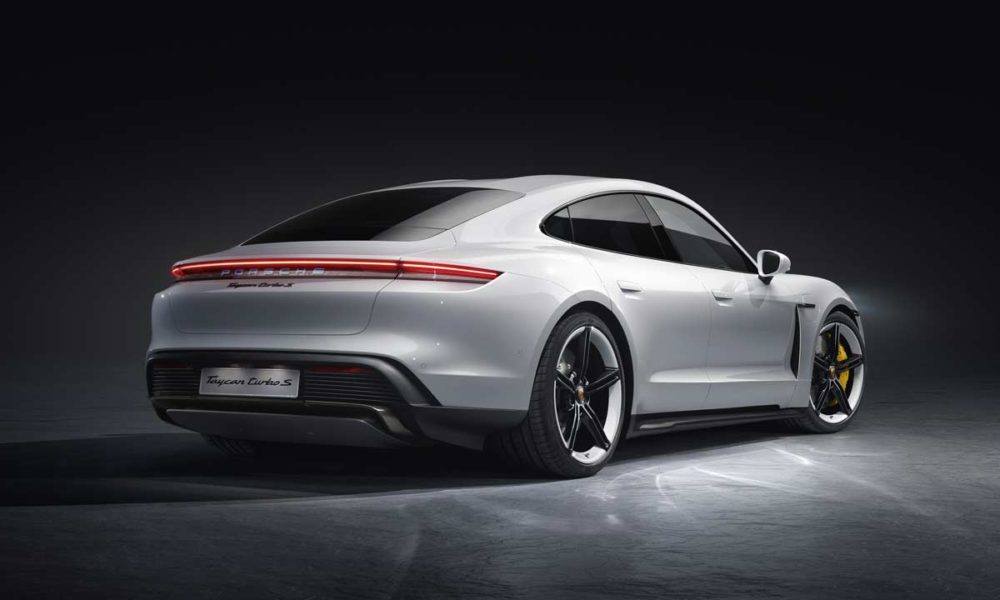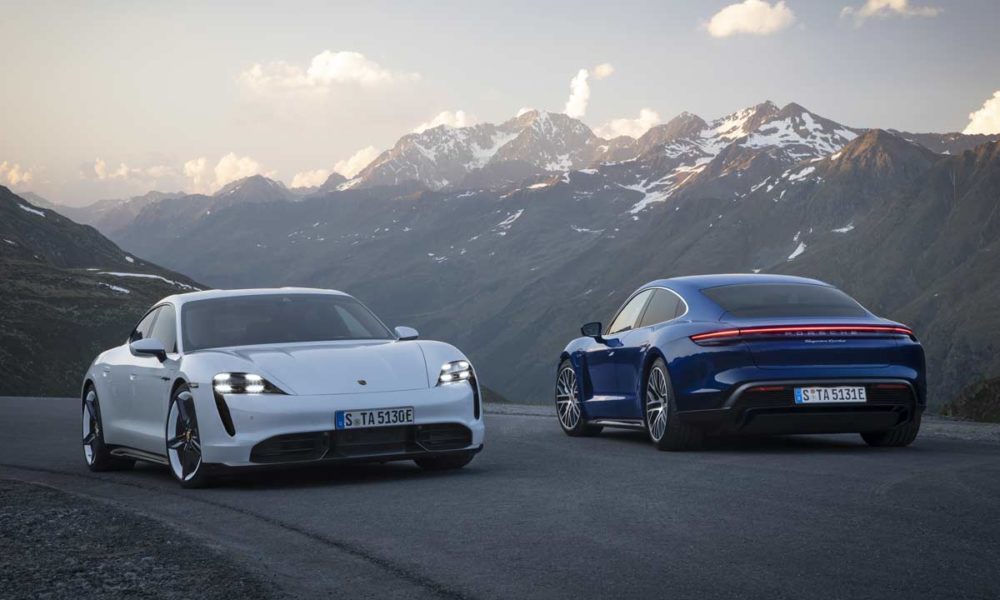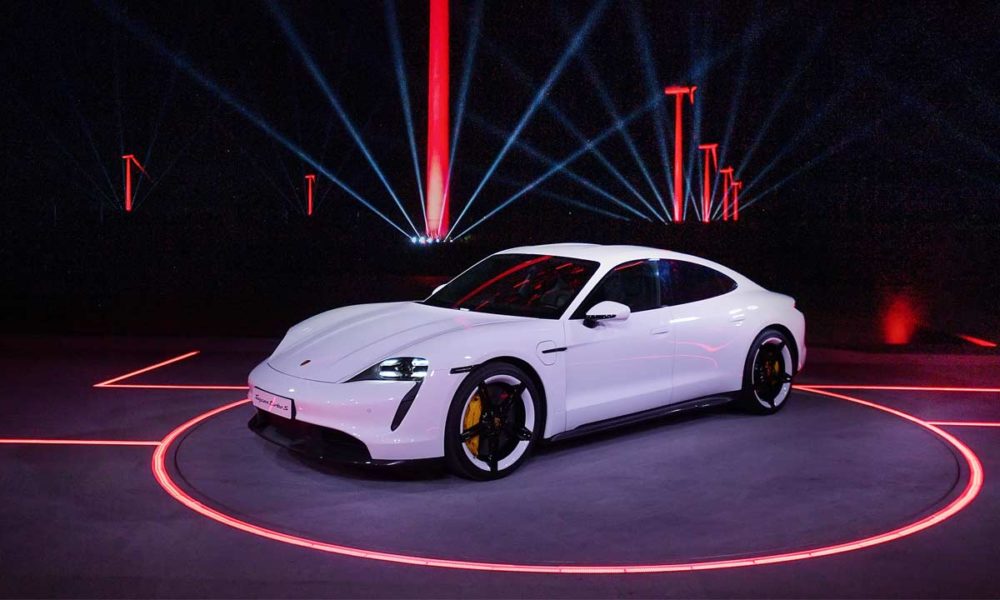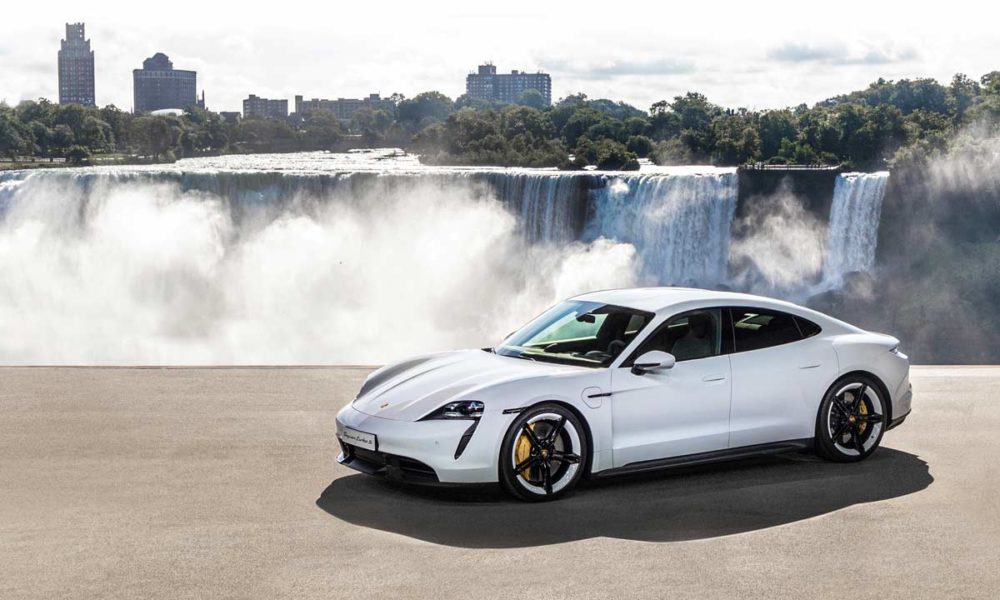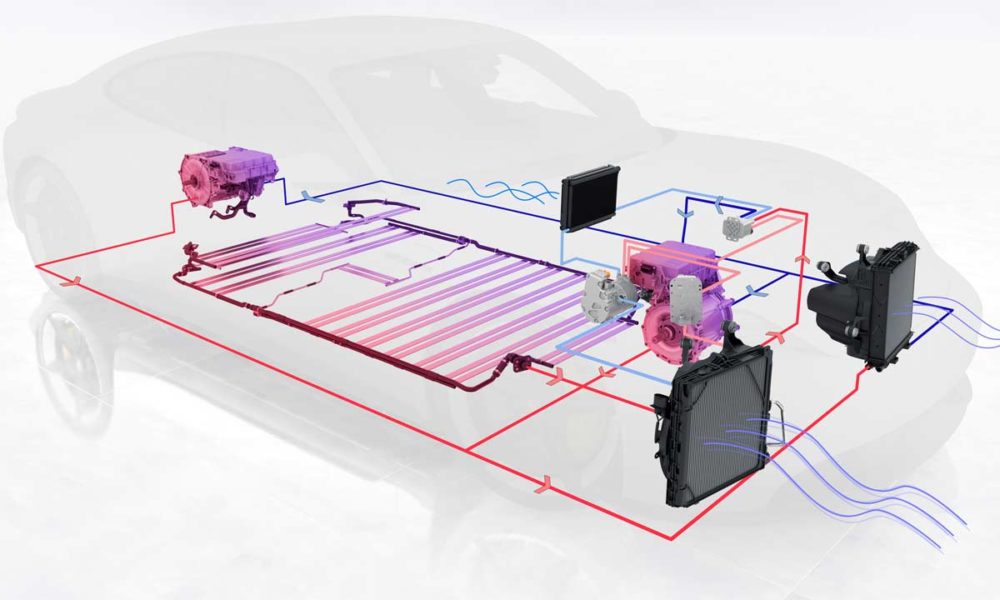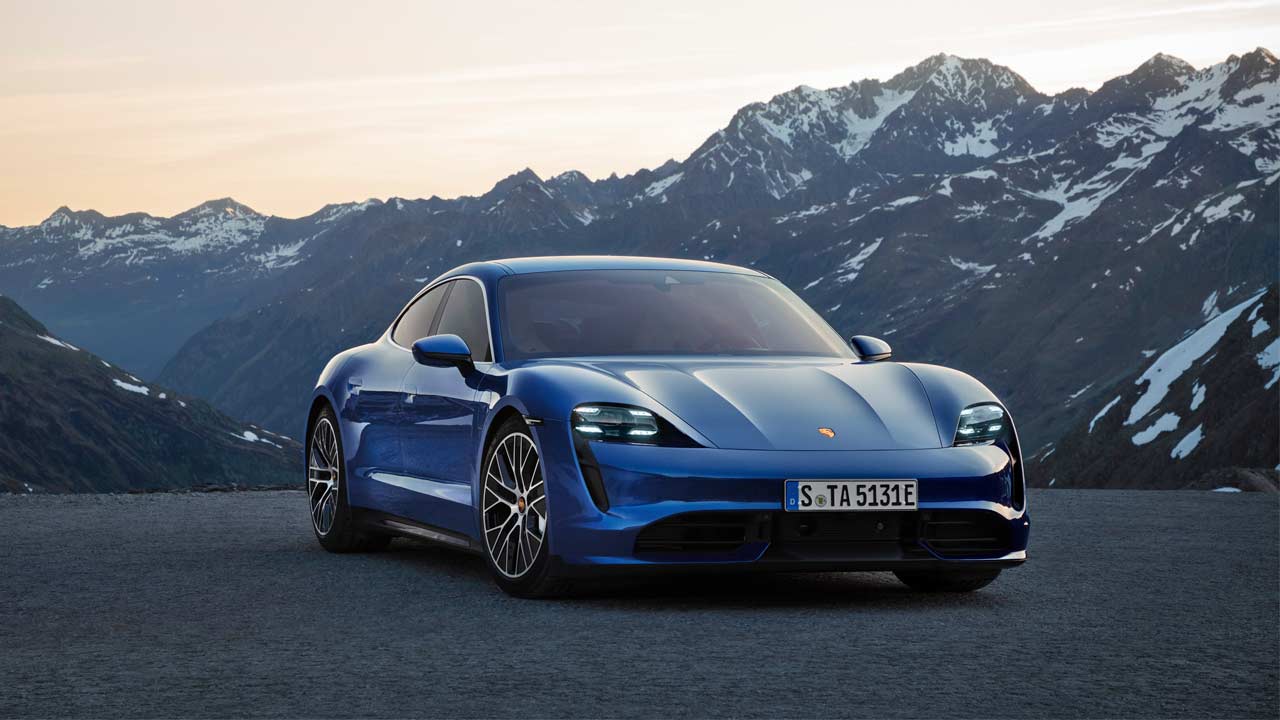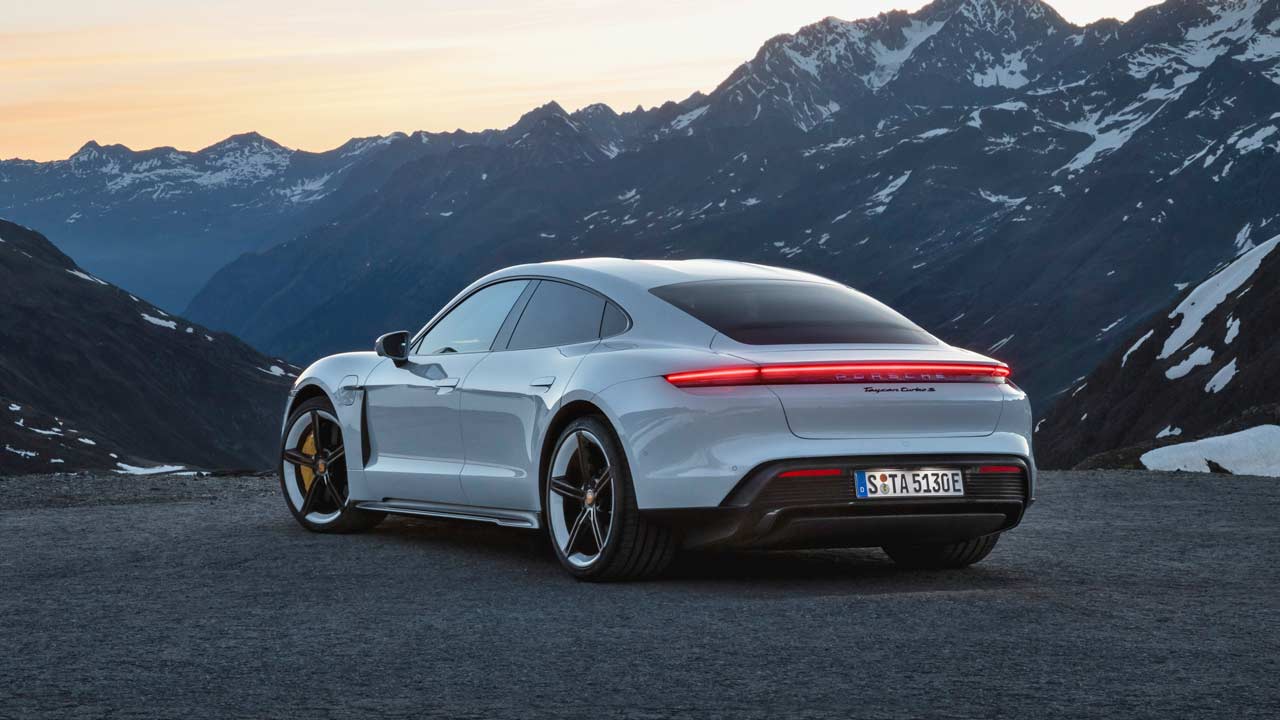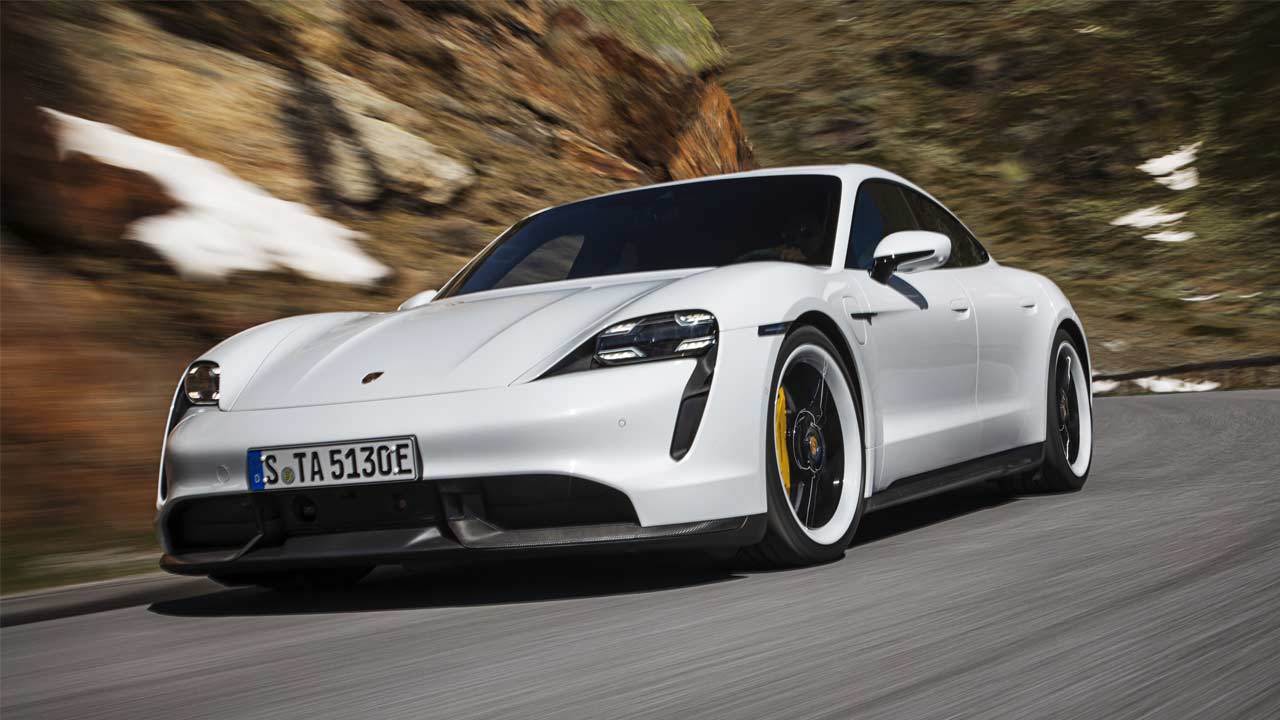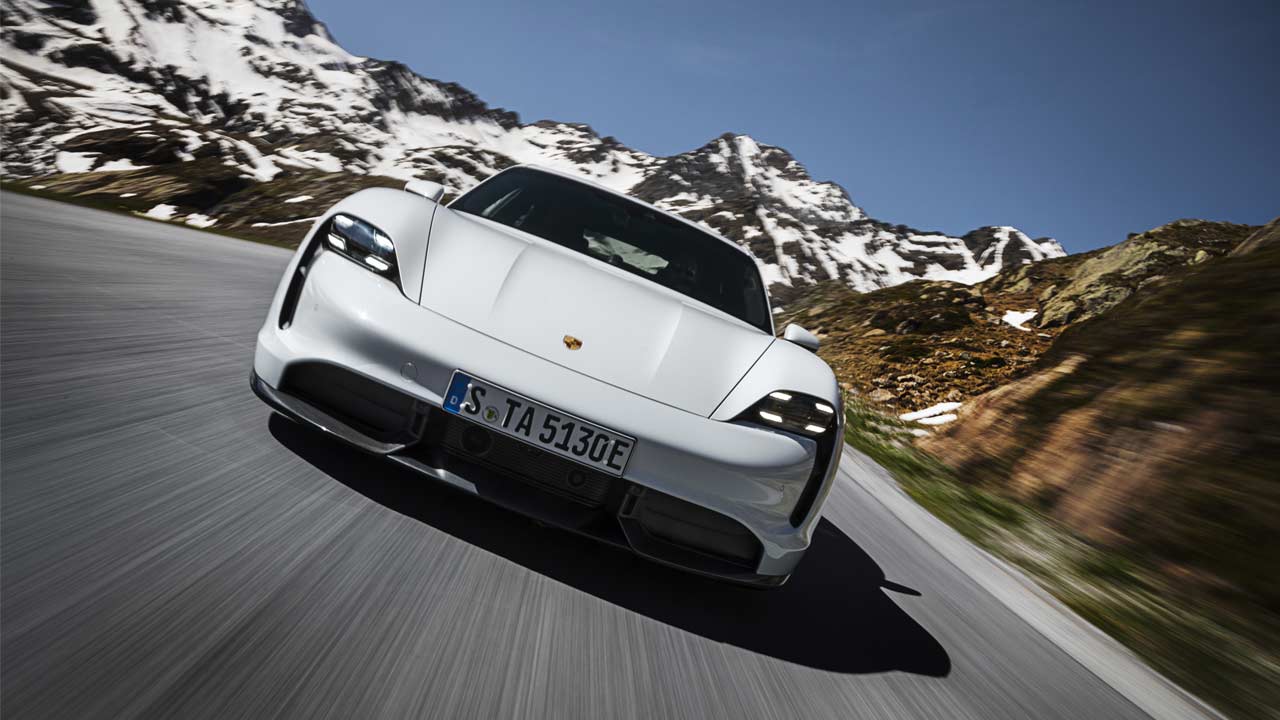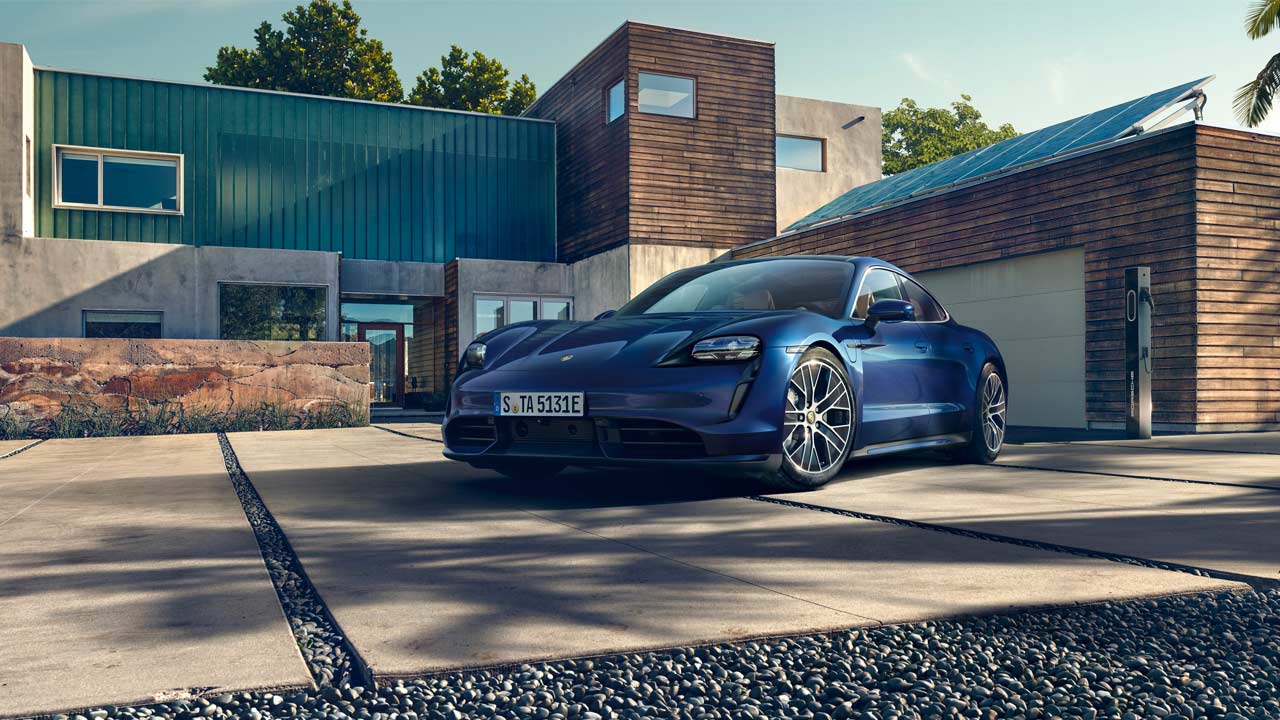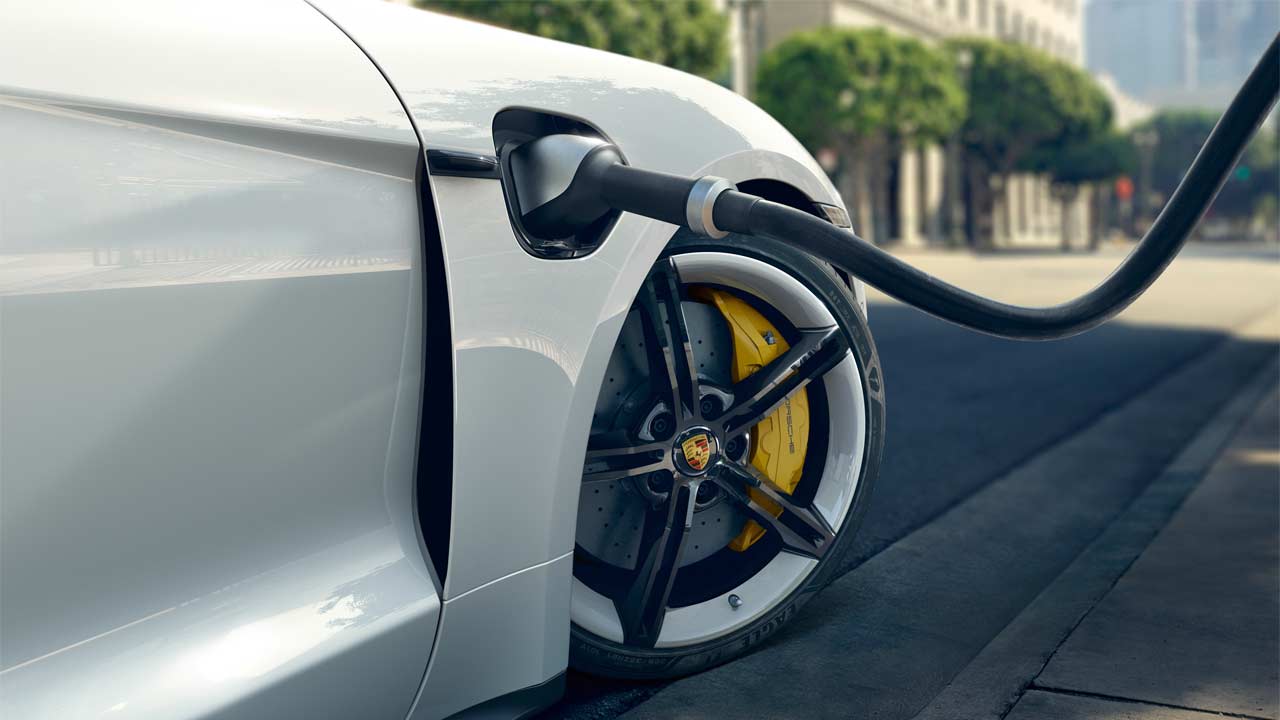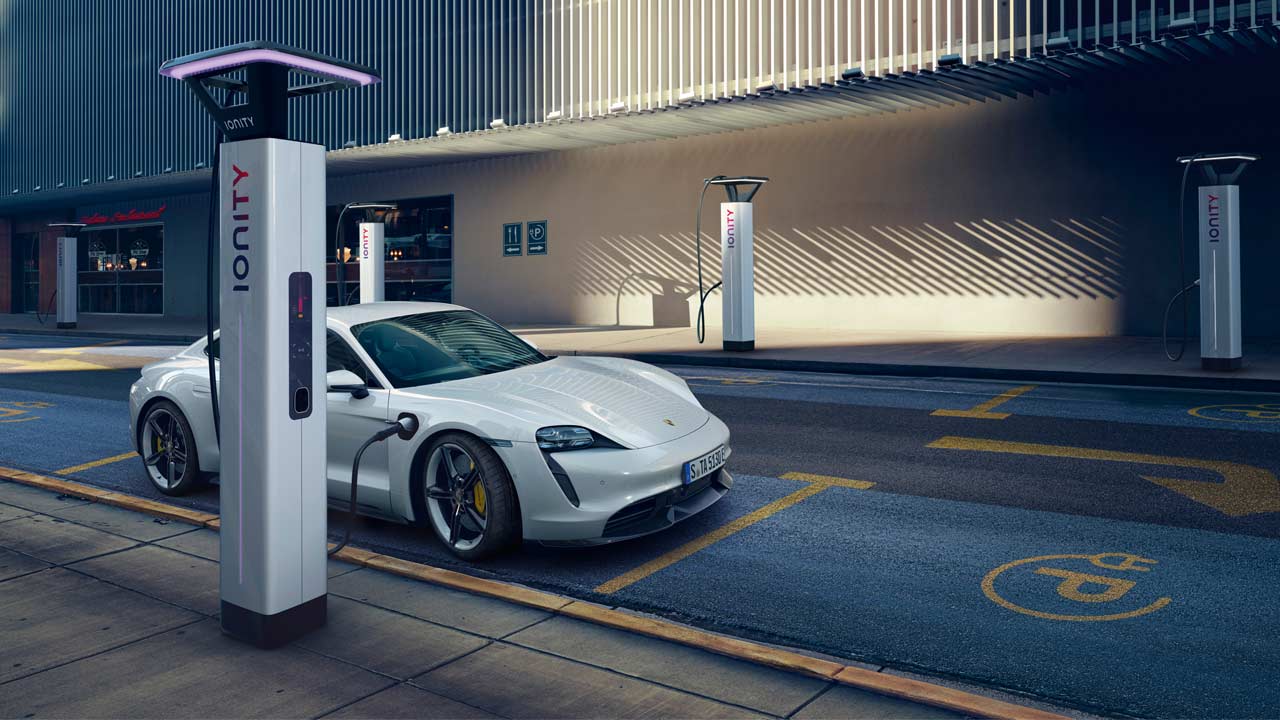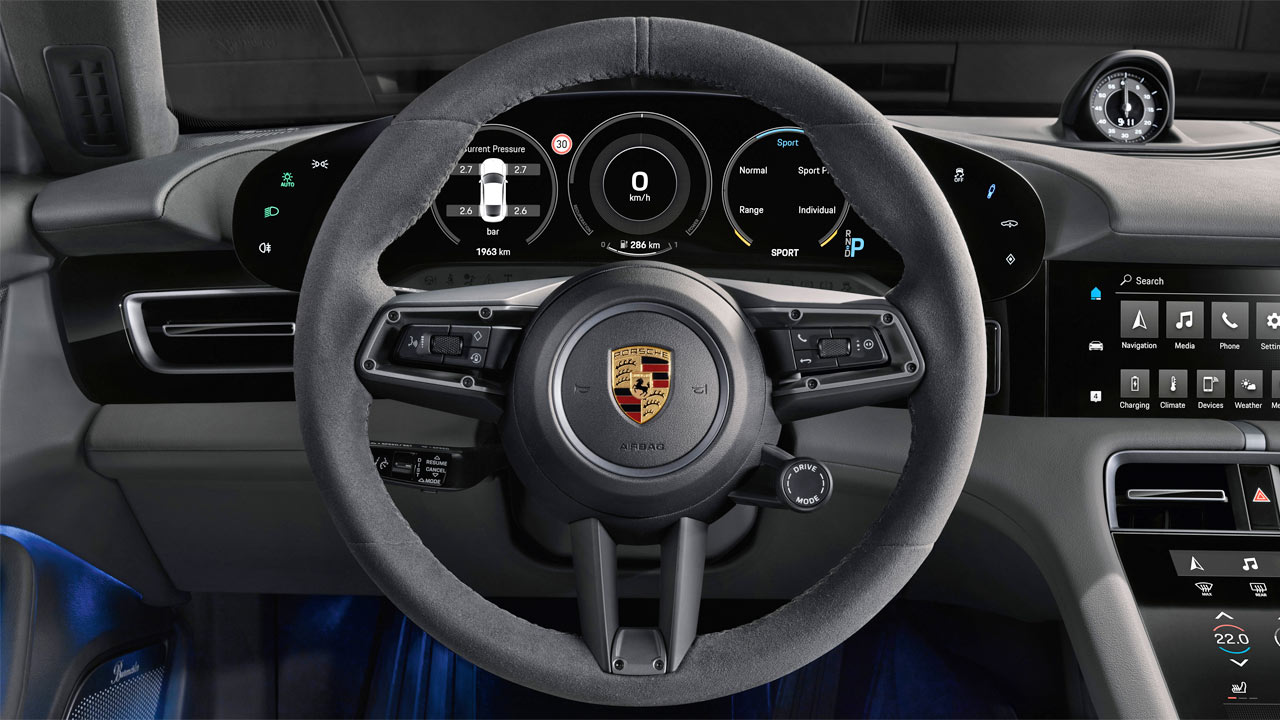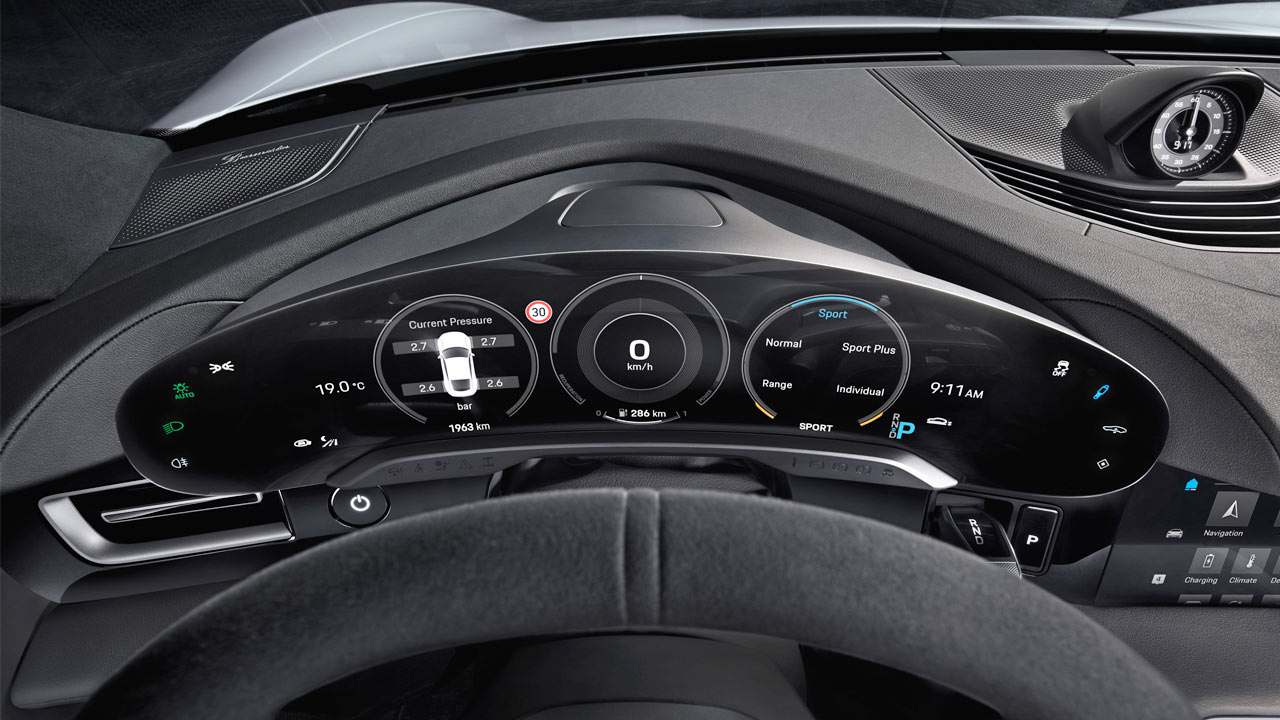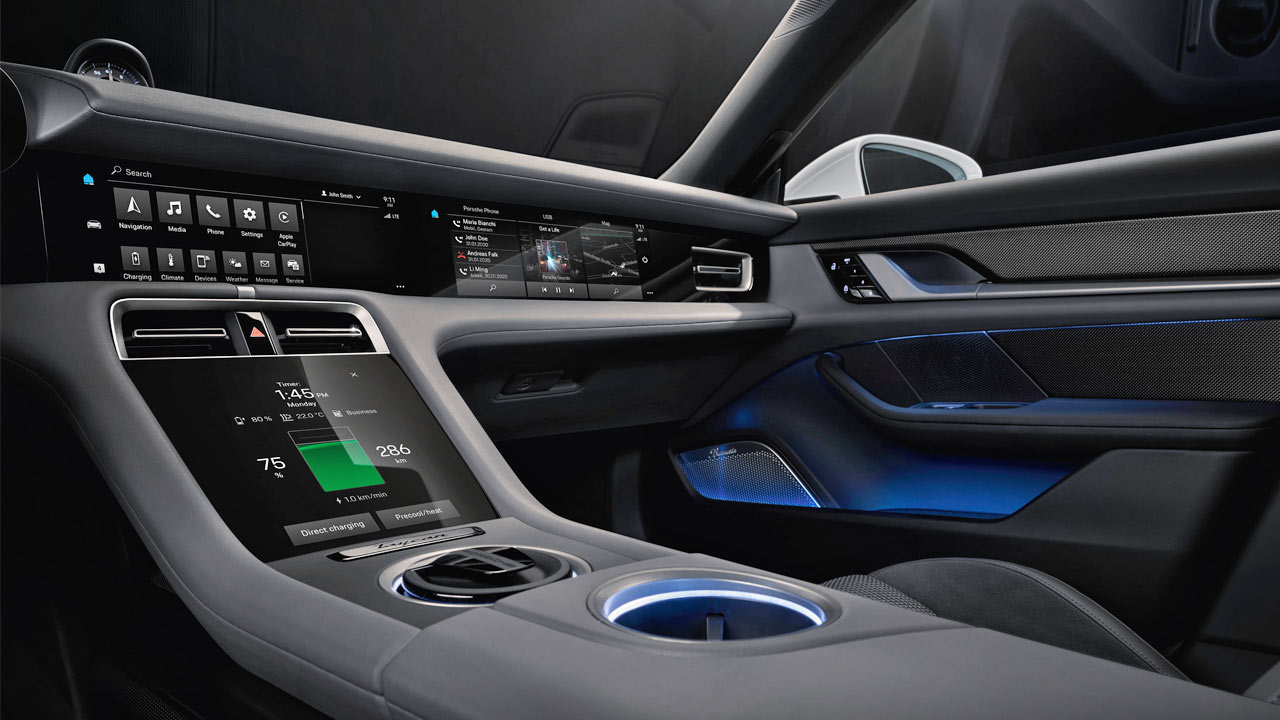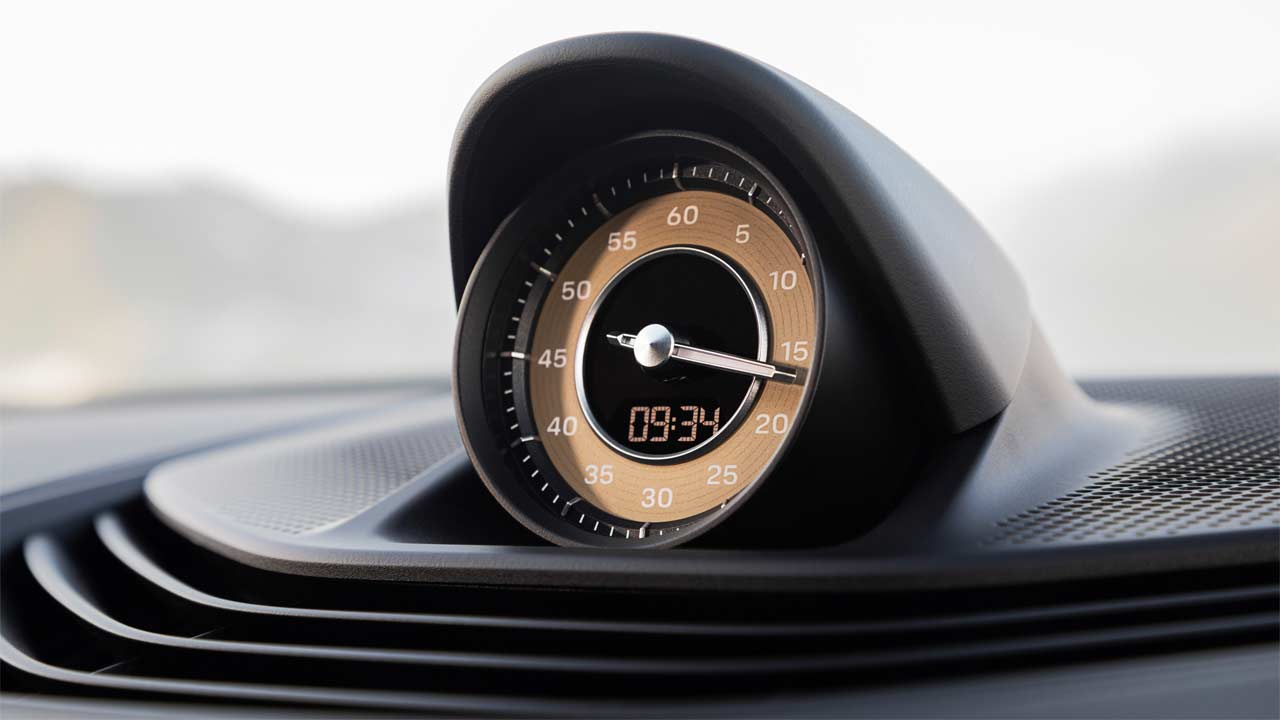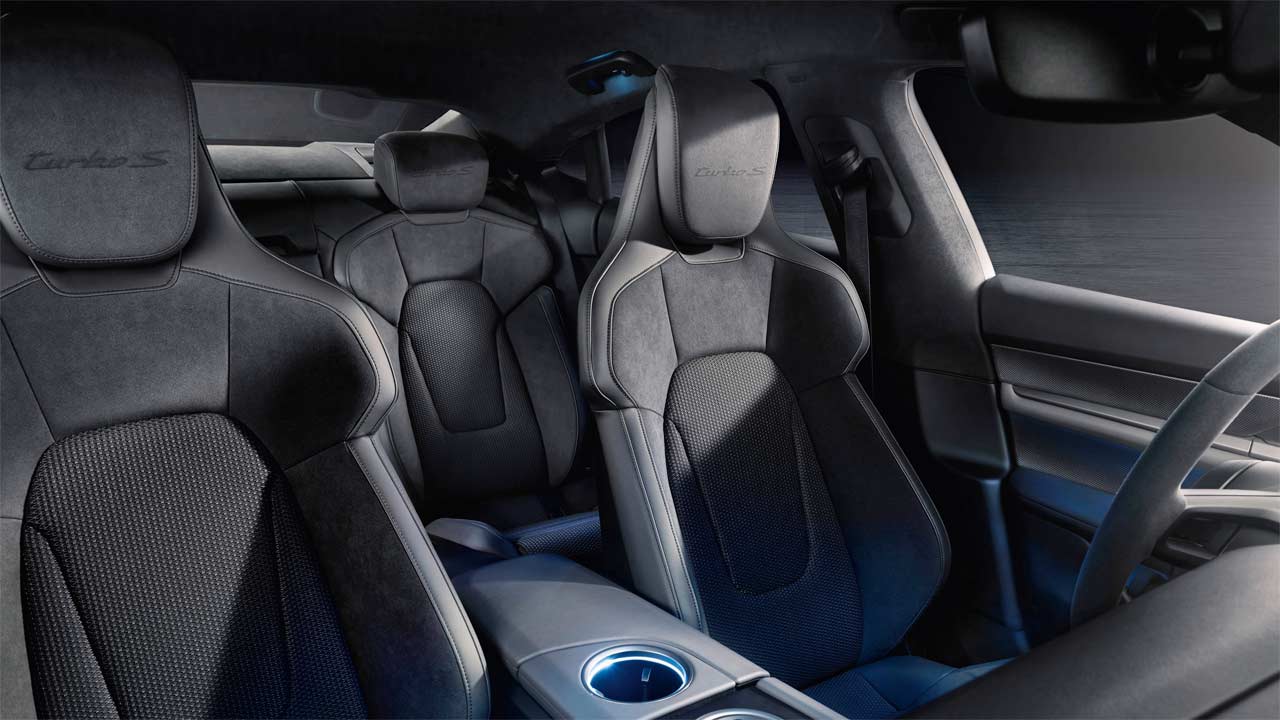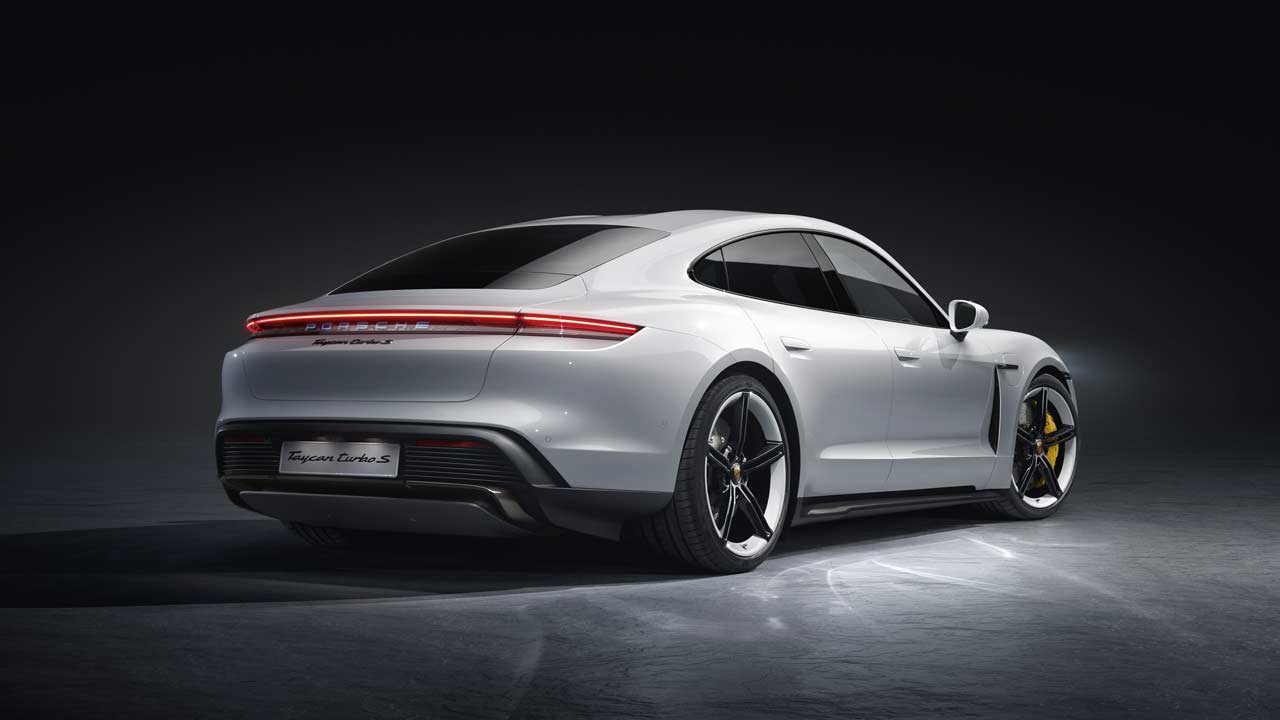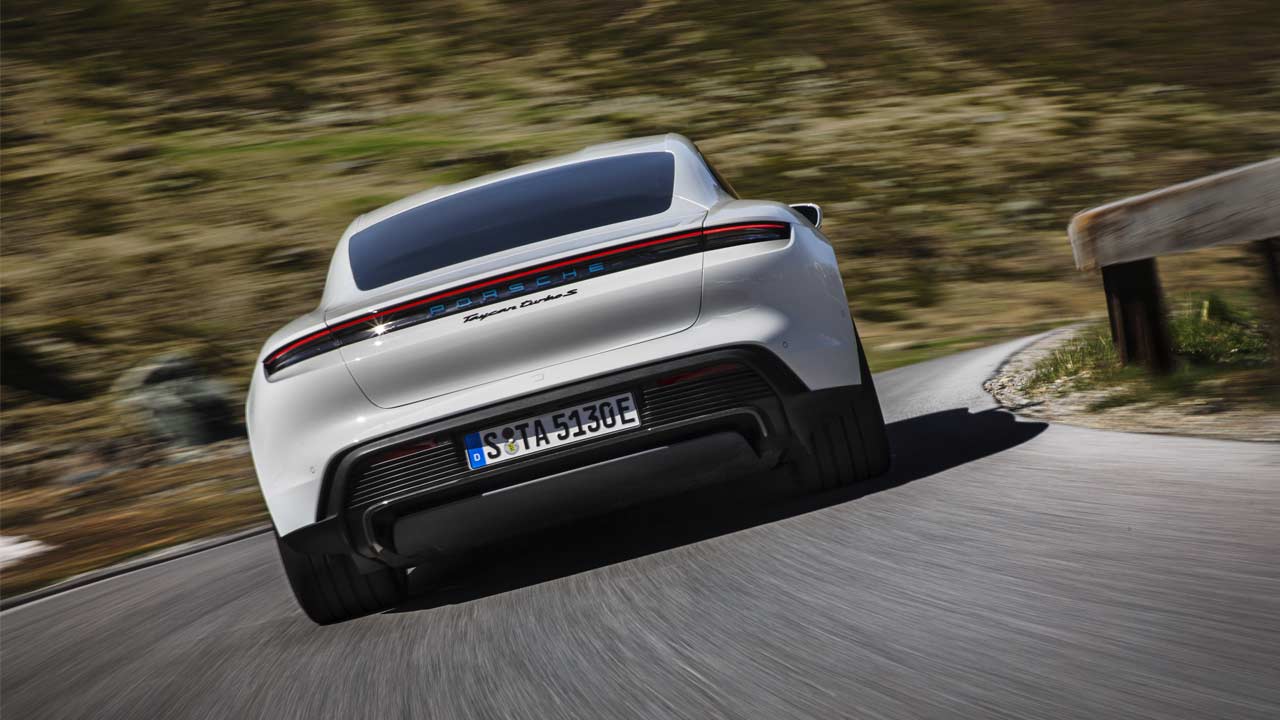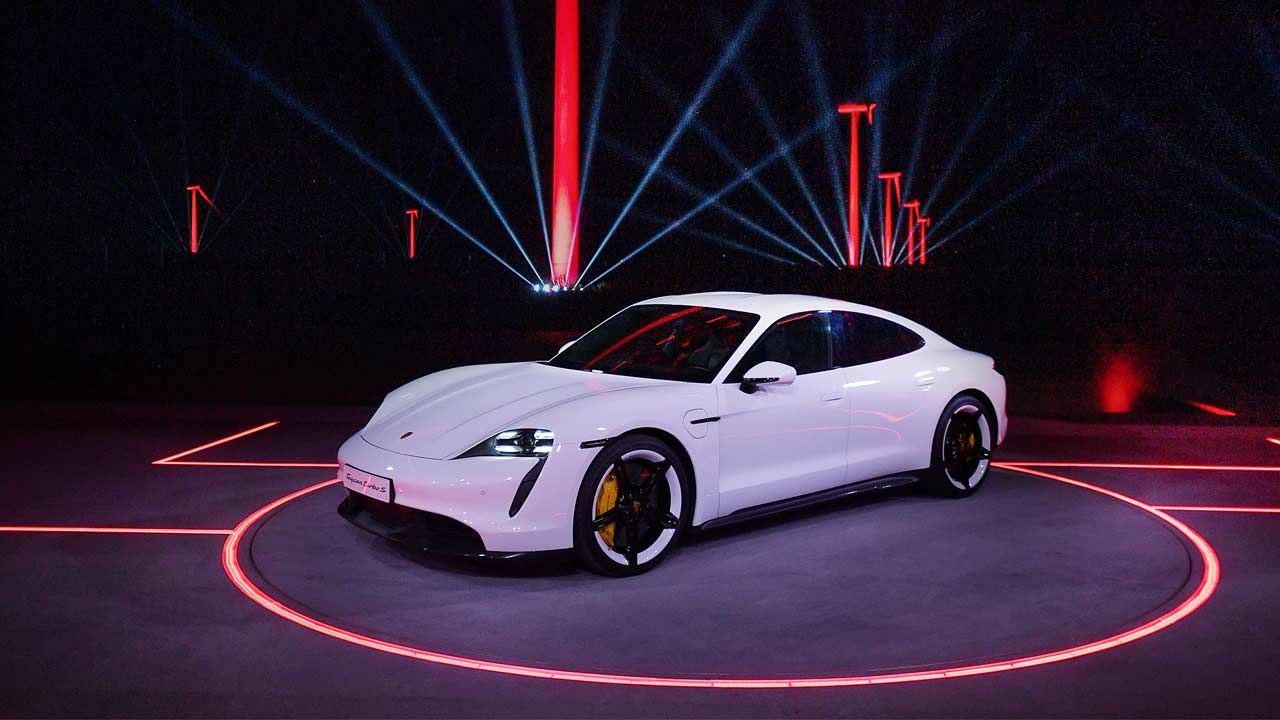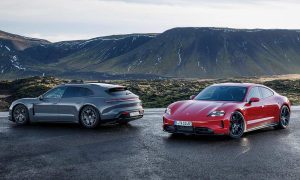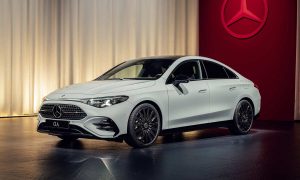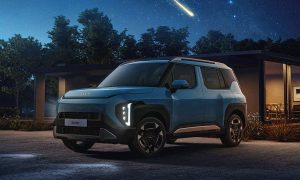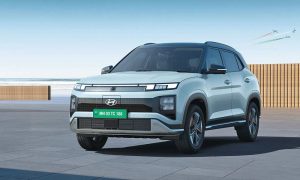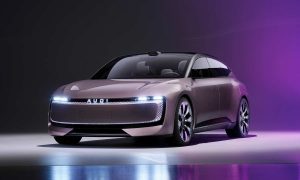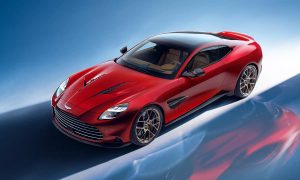That’s right. The all-electric Porsche Taycan has made its debut simultaneously in three continents (North America, Europe, and China), with Turbo and Turbo S models. Obviously, the “Turbo” is just metaphorical, there are no swooshy sounds here, unfortunately. With that out of the way, let’s take a look at the cars.
The white one in the pictures here is the Taycan Turbo S, which I think looks closest to the concept. The Taycan Turbo on the other side looks pretty much like the Panamera. Compared to the Panamera, the Taycan’s roofline is much more slopy, almost like a stretched version of the 911. Its smooth lines and curves and flat underbody have resulted in a drag coefficient of 0.22 Cd.
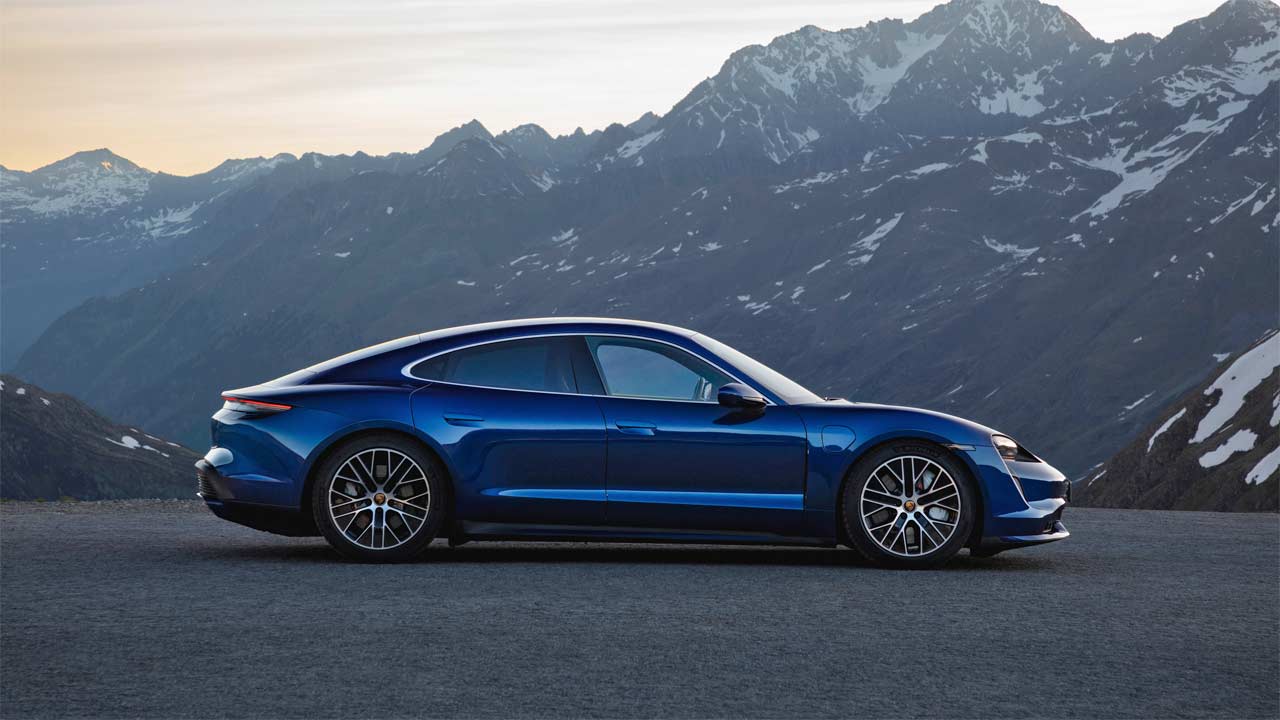 Taycan Turbo
Taycan Turbo
The production model measures 4,963 mm in length, 2,144 mm in width (including mirrors), and 1,378 mm in height. Wheelbase measures 2,900 mm.
The Taycan links our heritage to the future. It carries forward the success story of our brand – a brand that has fascinated and thrilled people the world over for more than 70 years. – Oliver Blume, Chairman of the Executive Board, Porsche AG
We promised a true Porsche for the age of electromobility – a fascinating sports car that not only excites in terms of its technology and driving dynamics, but also sparks a passion in people all over the world, just like its legendary predecessors have done. Now we are delivering on this promise. – Michael Steiner, Member of the Executive Board, Porsche AG
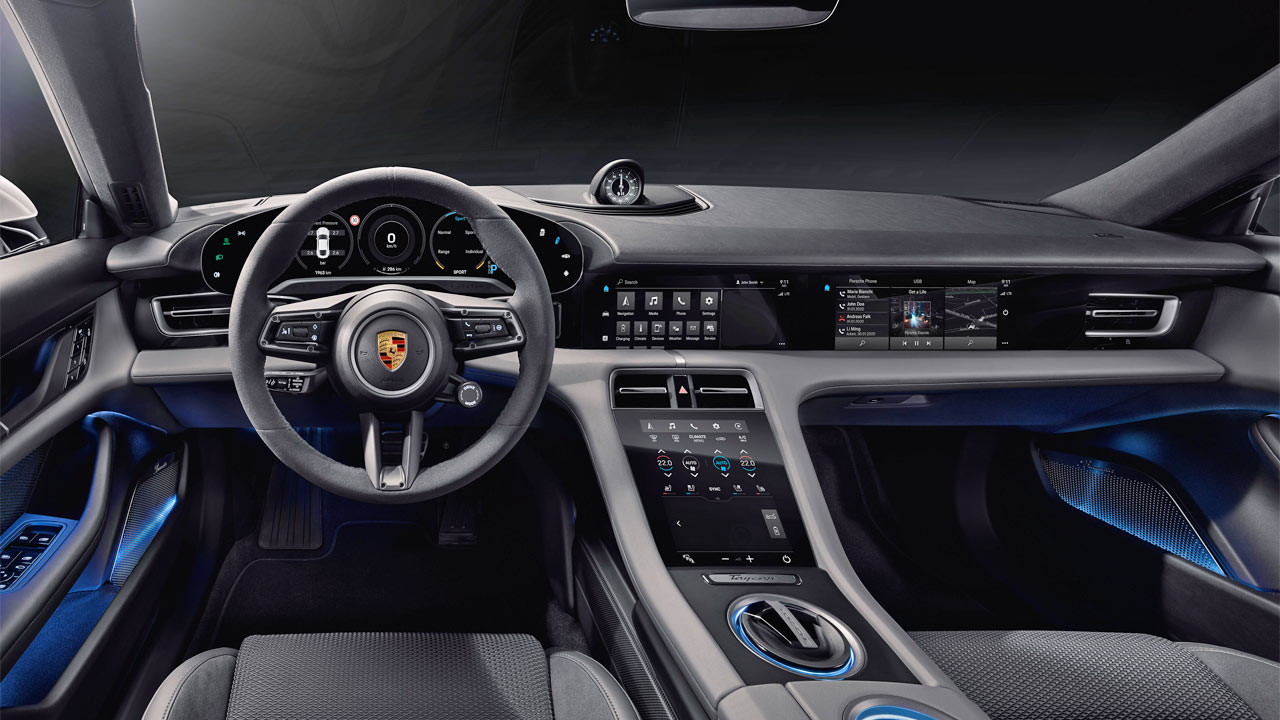
The production interiors of the Taycan were revealed just over a week ago. More about the interiors here. Features include a curved instrument cluster, 10.9-inch infotainment system, and 8.4-inch touch panel on the centre console. Options include a passenger display and four-zone climate control.
As for luggage compartments, the Taycan offers two. The front compartment has a capacity of 81 litres and the rear 366 litres.
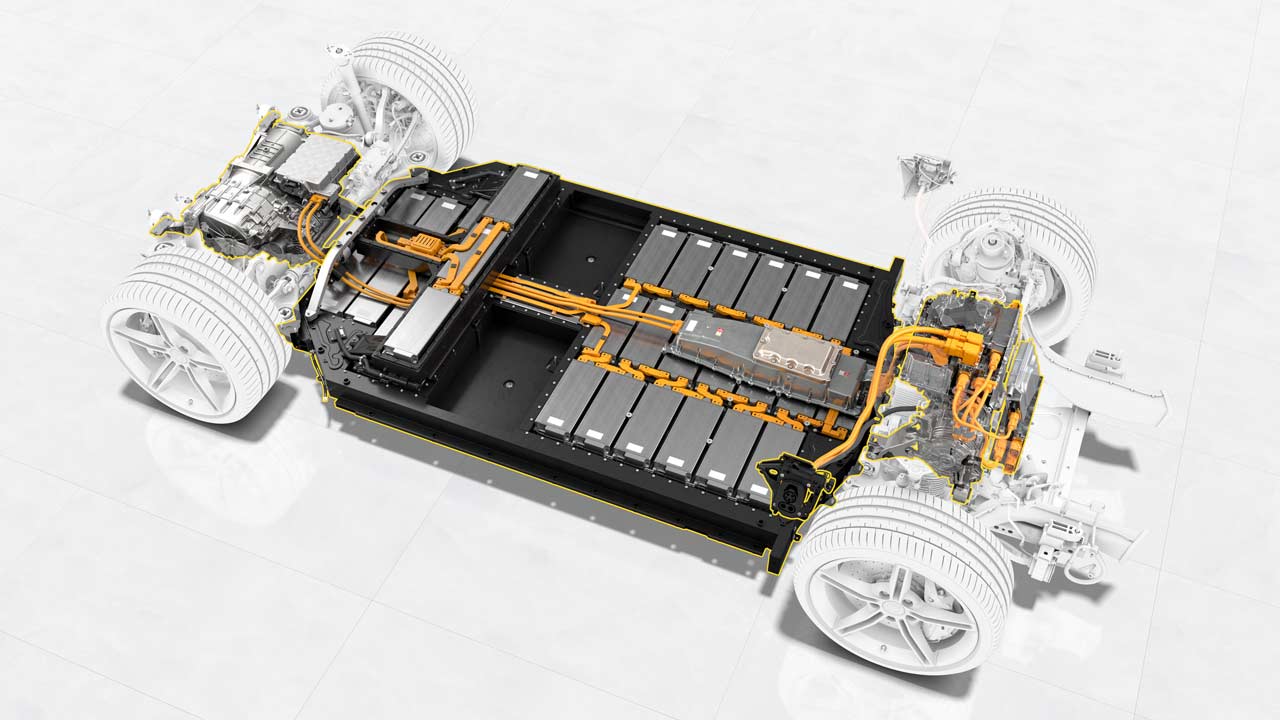
The Taycan has two motors, one on each axle, forming an AWD. In the Turbo model, the output is 460 kW (625 metric hp) and 850 Nm (627 lb-ft) of torque. The Overboost function in combination with Launch Control gets you 500 kW (680 metric hp). The Turbo S gets 560 kW (761 metric hp) of Overboost power and 1,050 Nm (774 lb-ft) of torque; without Overboost, the max power in the Turbo S is 625 hp.
Interestingly, there’s a two-speed transmission installed on the rear axle. Porsche says that the first gear is for an even more acceleration from a standing start, while the second gear with a long ratio is to ensure high efficiency and high power reserves.
The Taycan uses an 800-volt architecture instead of the usual 400-volt for the electric cars. This according to Porsche, enables consistent high performance, reduces the charging time and decreases the weight and installation space of the cabling. The battery is integrated into the vehicle’s cooling circuit via a line system and a coolant pump.
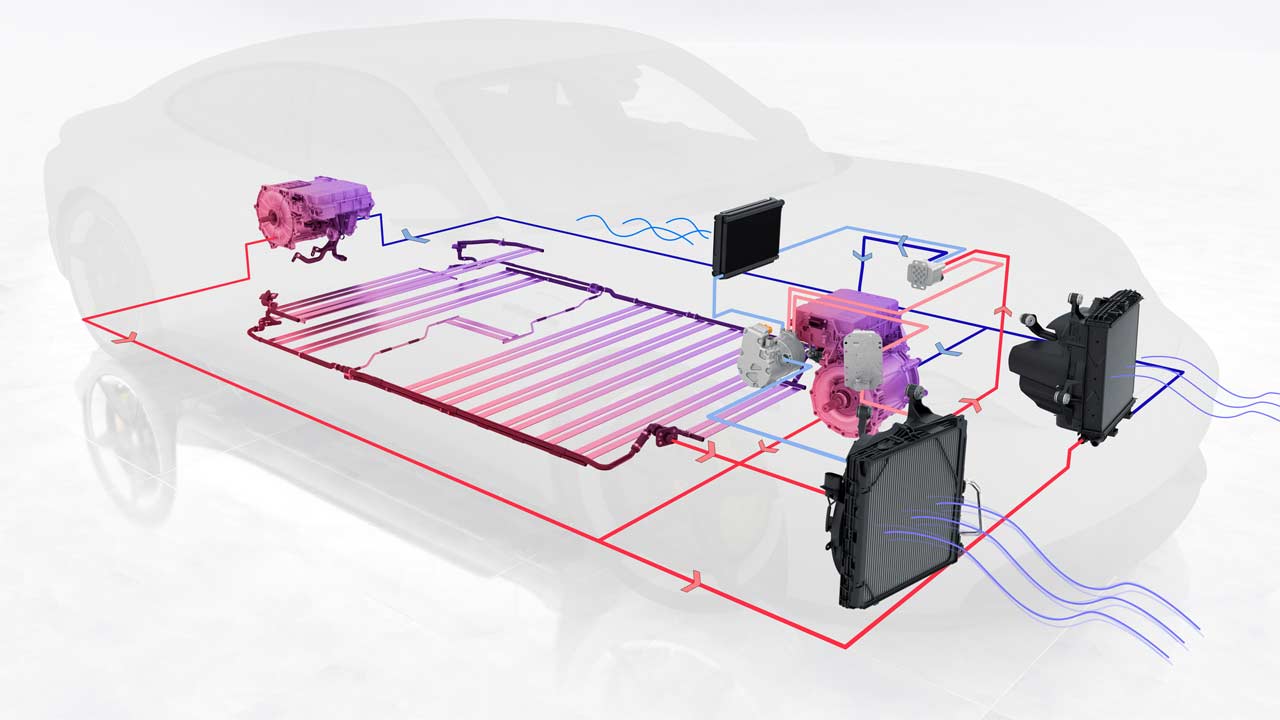
The cooling elements have been placed outside the actual battery box and are glued to its underside so as to allow heat transfer. The fundamental development aim was to dissipate as little heat as possible into the environment and thus be as energy-efficient as possible in winter, Porsche said. The battery can also store the waste heat from the liquid-cooled high-voltage components. As a result, it serves as a thermal storage device or buffer, enabling functions such as conditioning to ensure driving performance.
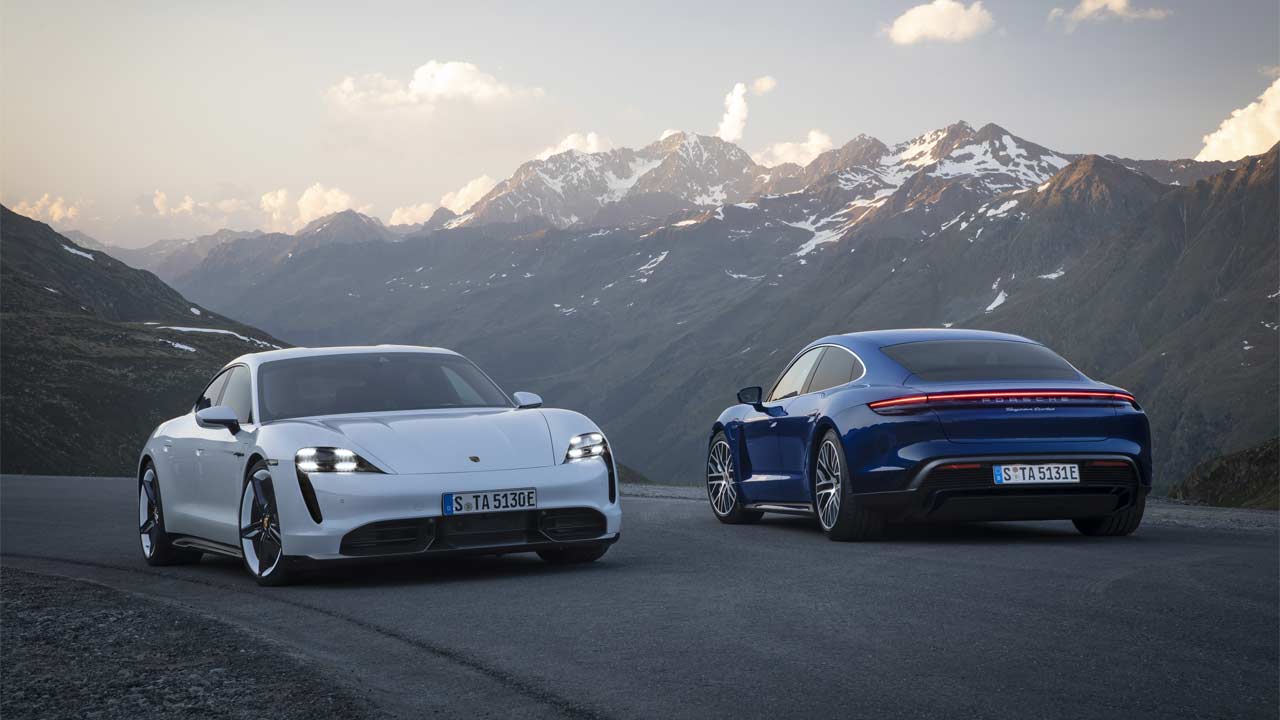
The Turbo S is claimed to accelerate from 0 – 100 km/h in 2.8 seconds, while the Turbo takes 0.4 seconds more. The top speed, however, is 260 km/h on both models. At 2,295 kg unladen, the Turbo S weighs 10 kg less than the Turbo model.
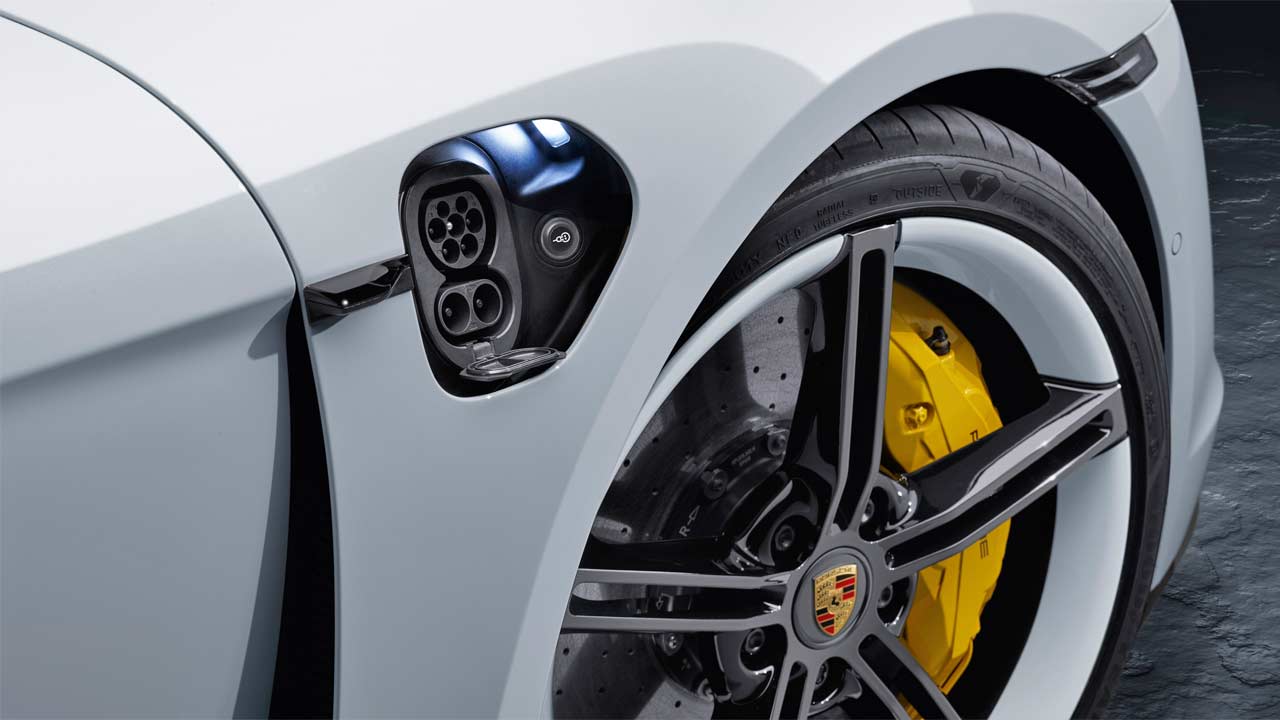 Just swipe under that black panel to access the charging port
Just swipe under that black panel to access the charging port
The 93.4 kWh floor-mounted Performance Battery Plus battery pack is claimed to offer a range of up to 412 km (WLTP) in the Turbo S and up to 450 km (WLTP) in the Turbo. Since the Taycan uses an 800-volt architecture, it can charge the battery with a maximum charging capacity of 270 kW. Under ideal conditions, a 5 to 80% SoC (state of charge) is claimed to happen in 22.5 minutes.
For charging at 400-volt charging points, an on-board 50 kW DC charger is installed (150 kW optional). An on-board 11 kW AC charger is also installed, which would take about 9 hours to fully charge the battery.
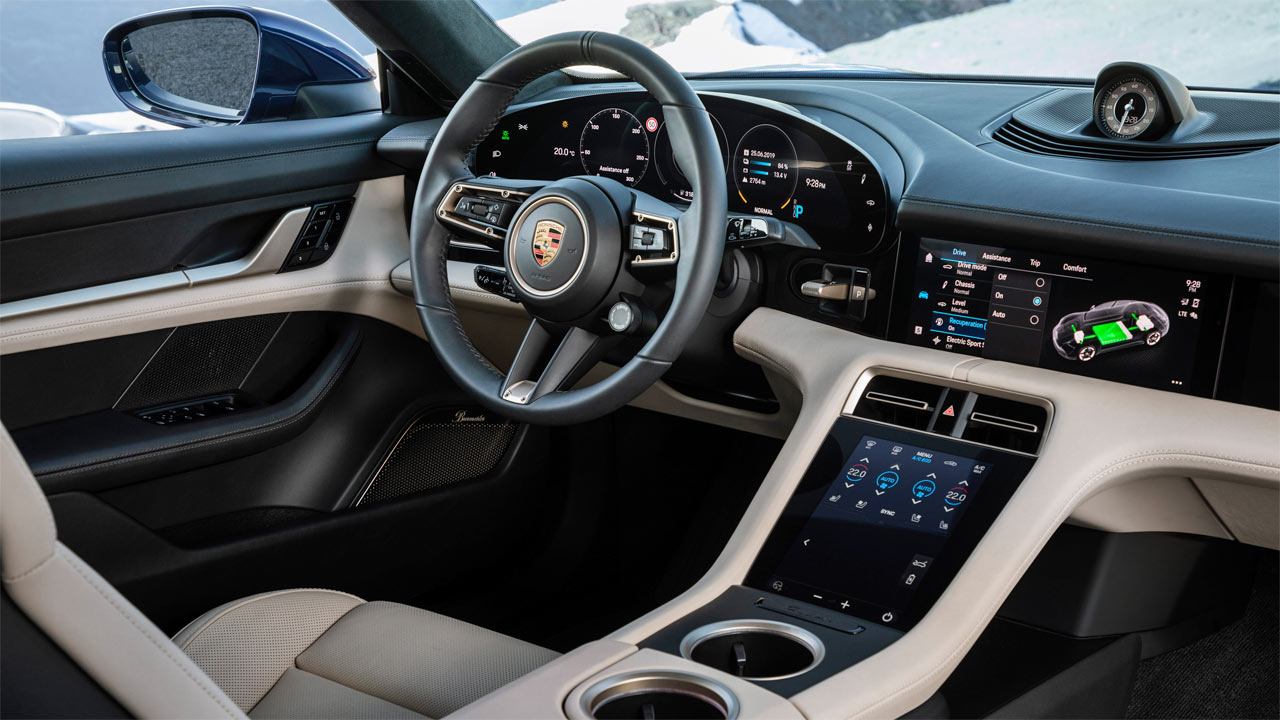
Driver gets Range, Normal, Sport and Sport Plus modes to play with, while there’s also an Individual mode which is self-explanatory. The Taycan gets Porsche 4D Chassis Control systems, which includes adaptive air suspension with three-chamber technology including PASM (Porsche Active Suspension Management) electronic damper control, and Porsche Dynamic Chassis Control Sport (PDCC Sport) electromechanical roll stabilization system including Porsche Torque Vectoring Plus (PTV Plus).
At up to 265 kW, the potential recuperation power according to Porsche, is significantly higher than that of the competitors.
Also Read: Porsche Taycan laps Nürburgring in 7:42 minutes
The US prices for the Taycan Turbo and Taycan Turbo S start from $150,900 and $185,000, respectively. Prices exclude options, taxes, registration and other charges. In Germany, the Taycan Turbo and Taycan Turbo S are priced €152,136 and €185,456, respectively.

Leave a Reply
Note: Comments that are unrelated to the post above get automatically filtered into the trash bin.
